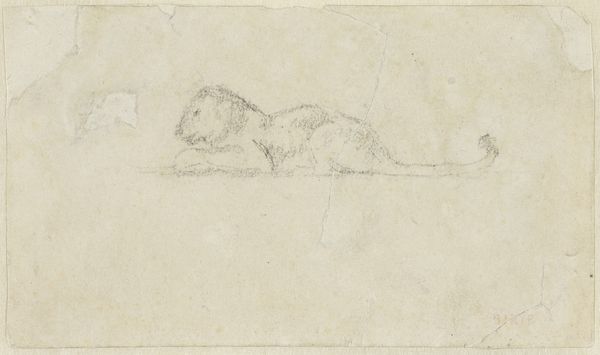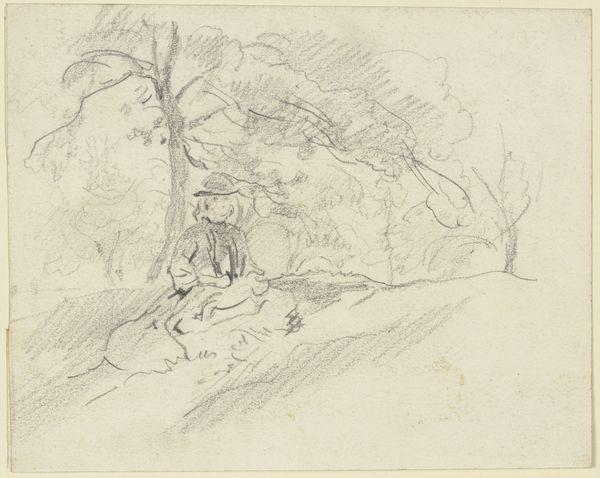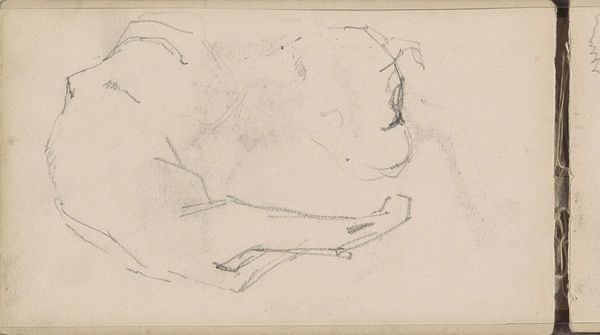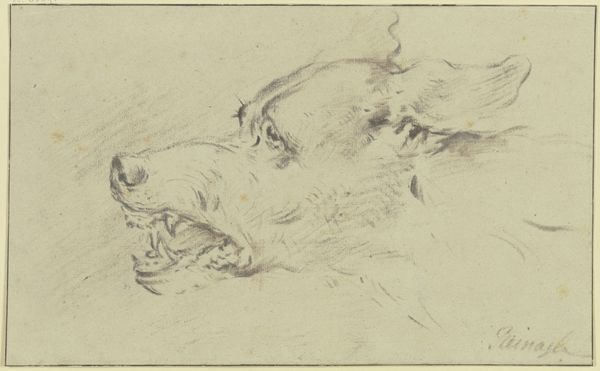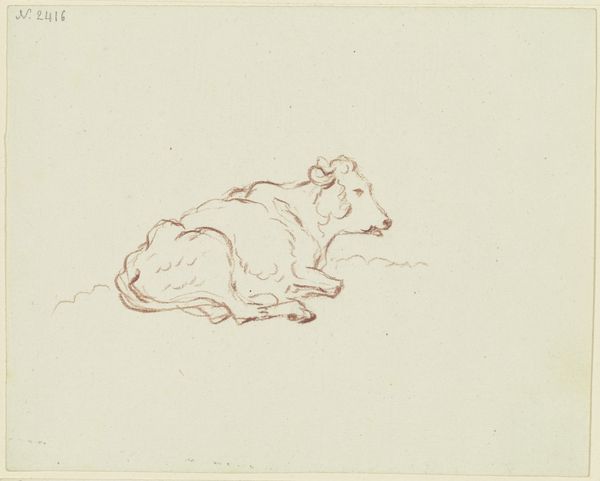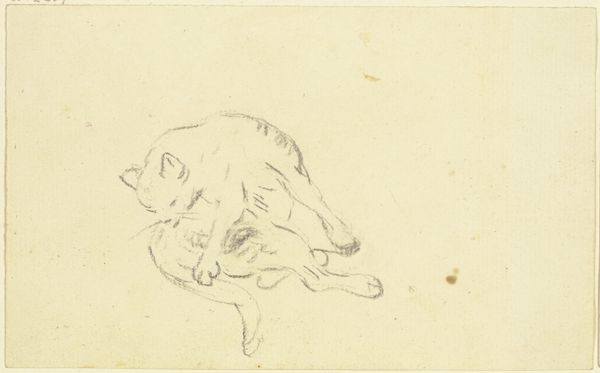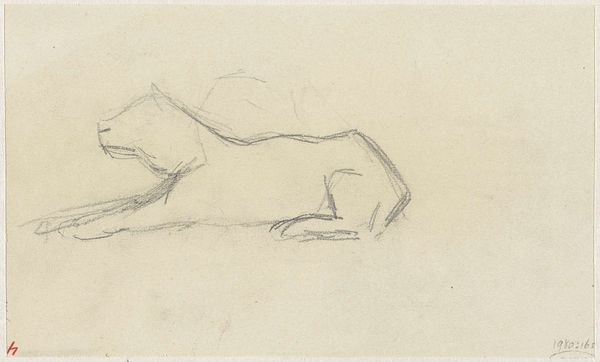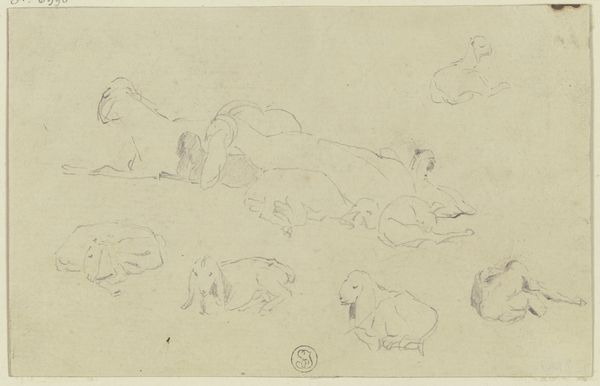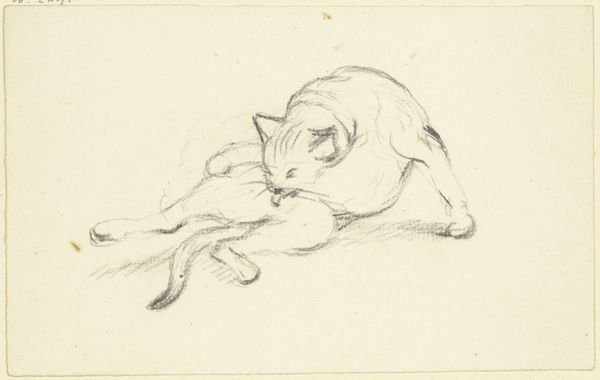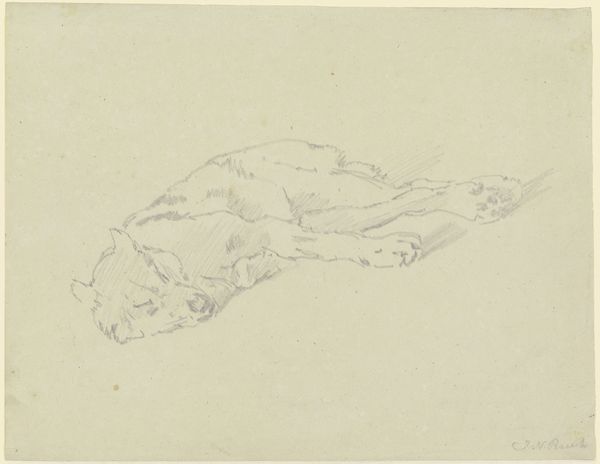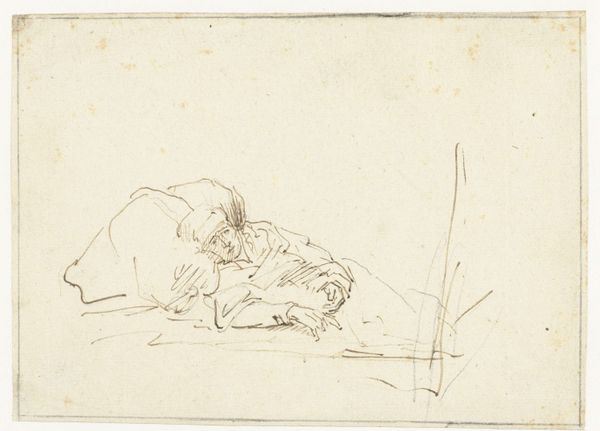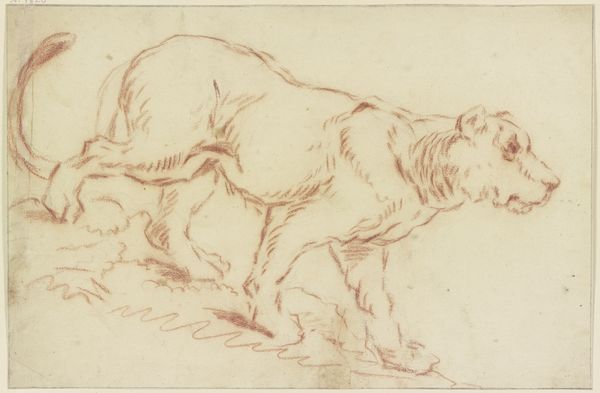
drawing, print, paper, pencil, graphite
#
drawing
#
animal
# print
#
pencil sketch
#
landscape
#
figuration
#
paper
#
pencil
#
line
#
graphite
#
sketchbook drawing
#
realism
Dimensions: 65 × 113 mm
Copyright: Public Domain
Curator: Before us, we have Antoine Louis Barye's pencil and graphite drawing, Lioness Lying near a Tree. Editor: My initial reaction is one of stillness and quiet observation. There's a fragility to the lines that creates an intimate atmosphere, like we're intruding on a private moment. Curator: Indeed. Barye was known for his intense study of animal anatomy and behavior. This drawing on paper would likely have been preparatory, a step in his broader sculpting work that frequently explored the animal form. We see the means of production laid bare. Editor: Yes, but look how much is conveyed with so little! The minimal lines are confident, capturing the lioness's relaxed posture and the curve of her spine. There's a beautiful balance between detail and suggestion. Semiotically, the tail extending outside her main body is striking! Curator: Precisely. And note the landscape's barest suggestion, reduced only to the form of a single tree in graphite and thin pencil line. Consider too, the nineteenth-century context: exotic animals and detailed renderings become coveted status objects for many people. It speaks volumes about society at that time, not just aesthetics. Editor: The softness and vulnerability almost contrast her traditionally attributed fierce disposition. It prompts me to think of lions I see in nature programs. The piece does indeed ask if what we consume as a reflection is accurate at all. Curator: The artist's focus on materiality brings us back to thinking about this work in relation to consumer culture. Graphite on paper became increasingly common material and a popular vehicle for capturing form with efficient material outputs in the industrial age. Barye’s drawing provides a potent example of the relationship between art and industrial process. Editor: Looking at it once more, its subdued palette highlights the animal's form but, to your point, speaks about the culture from which it emerges. It gives this simple drawing remarkable power, and prompts important questions on our assumptions about representations, and objects from around this time period. Curator: Absolutely. Studying Barye's practice, one comes away with more questions about how our industrial, capitalist society can both impact and enrich creativity when using a limited material range.
Comments
No comments
Be the first to comment and join the conversation on the ultimate creative platform.
